Apple tree diseases: how to identify and treat 5 common problems
Get the lowdown on these apple tree diseases to keep yours healthy and enjoy a successful harvest


It's worth getting to grips with the common apple tree diseases, whether you're growing a few dwarf varieties in patio pots or larger specimens in an orchard.
Knowing what to look out for, and how to treat problems should you spot them, gives your trees a better chance at staying in tip-top health. And that way, you can enjoy a bountiful harvest of delicious fruits come autumn – no matter the size of your kitchen garden.
5 apple tree diseases to look out for
With help from the experts, we've rounded up plenty of useful advice on apple tree diseases.
1. Brown rot disease
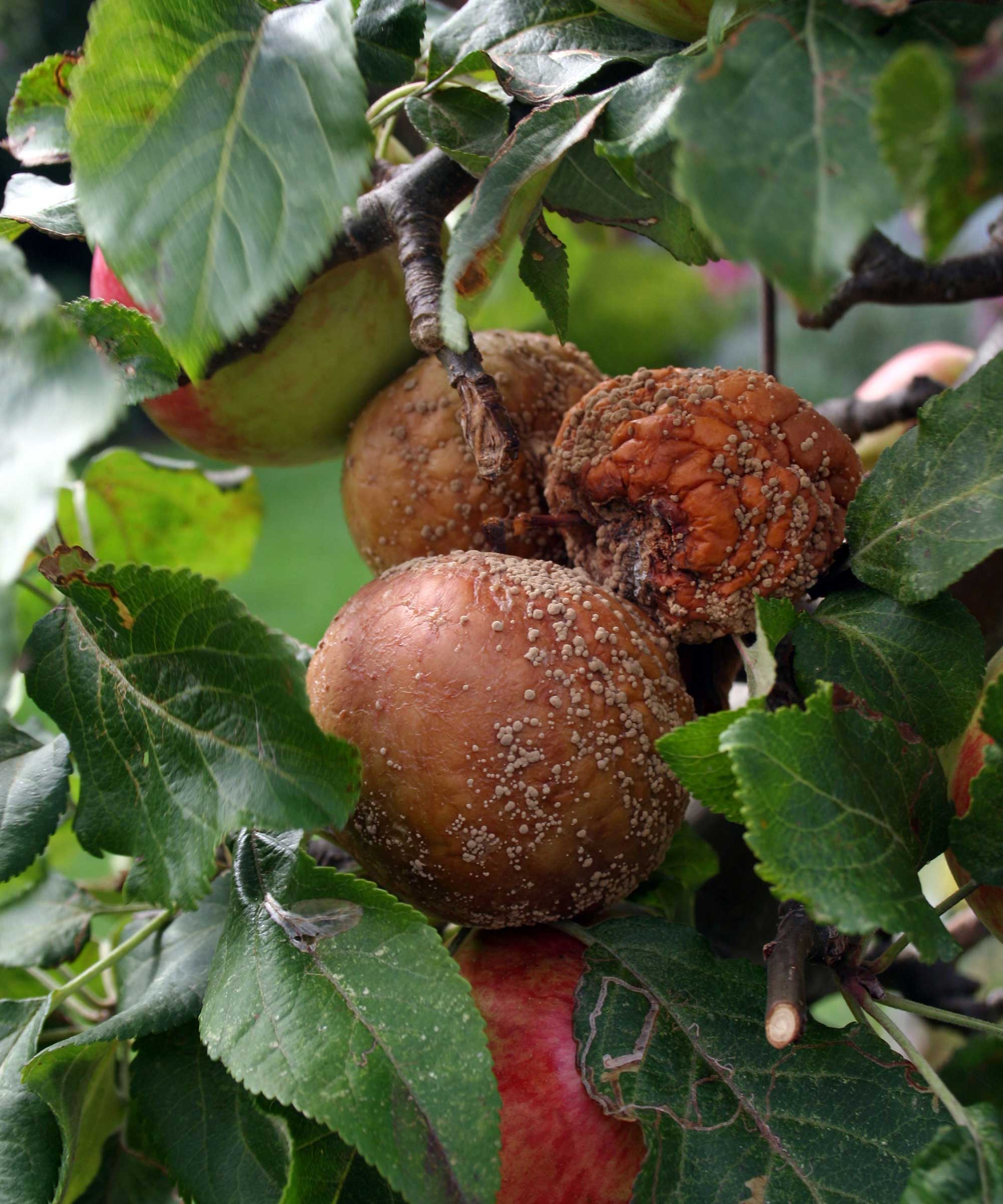
Dark blemishes and rotting apples can indicate brown rot disease. ' All you can do is remove and bin or bury deeply affected fruits,' advises John Negus, a gardening expert from Amateur Gardening magazine. 'Please do not compost them as spores may be released that will affect future fruits.
'I would also urge you to thin crowded branches to improve airflow,' he continues. 'Also, if the tree is young, feed it with 1oz (28g) per square meter of sulfate of potash, which improves resistance to this particular problem.'
Sprinkle it on monthly, from mid-spring to early fall, over the feeding root area, which aligns with the main branch tips. Then, water it in.
2. Canker
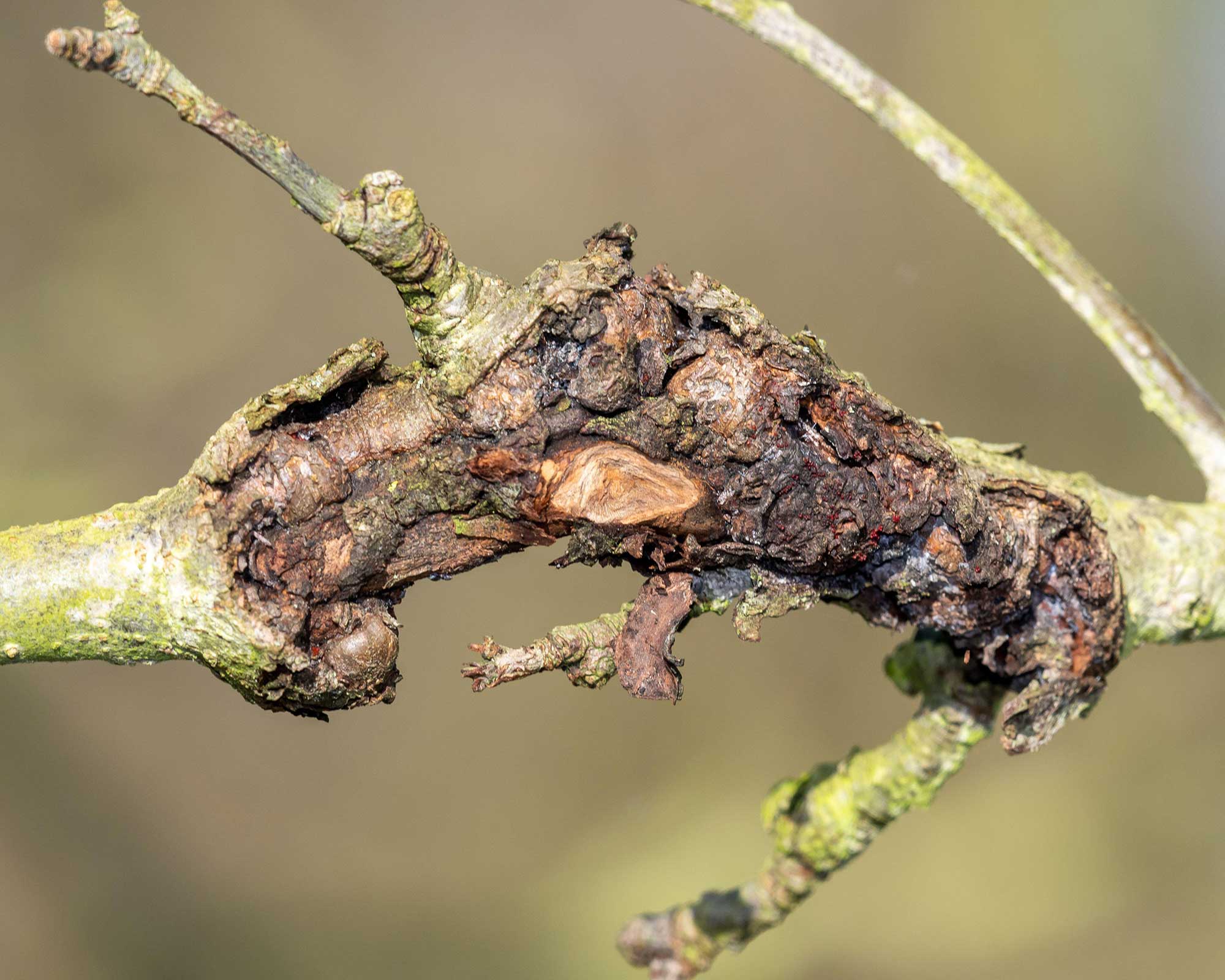
Canker is a fungal disease that causes areas of bark to crumble and die back. If it spreads, it can cause entire branches to die.
There are things you can do to try to reduce this. 'If only one branch is affected, prune it out at a point beneath the affected area,' says the Amateur Gardening experts.
'However, if the tree is showing symptoms on more than one branch this treatment could be too drastic. Instead, carefully pare away all the infected and damaged bark and wood, cutting back to completely healthy tissue. Disinfect the knife as you are doing this. Burn or bin the parings and sterilize all the tools used.
'Once the area is cleaned up, paint over the wound with a wound paint,' the team continues. Canker is said to be more serious on wet, heavy and/or acid soil types, they add, so check the soil drainage and think about raising the soil pH by liming if appropriate.
3. Powdery mildew
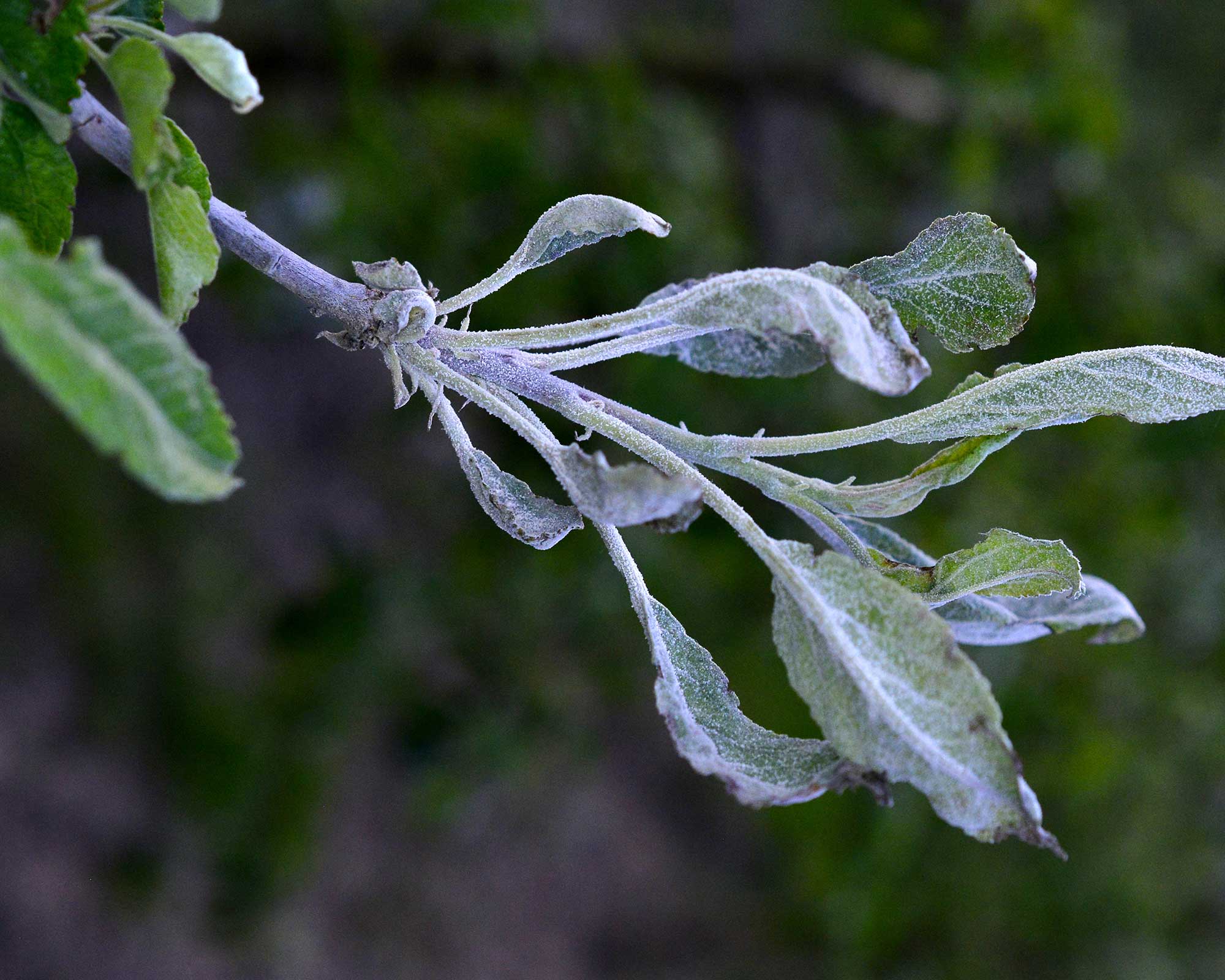
Are the leaves on your apple tree turning silvery-white and beginning to fall off the tree? Powdery mildew could be to blame – a fungal disease that affects lots of different plants.
If your tree is in a confined spot where air circulates poorly, disease spores are more likely to fall on leaves and shoots. Start by spraying with Vitax Pest and Disease Control, and in fall, thin crowded shoots to boost airflow, suggests John.
'Also, feed with sulfate of potash,' he adds. Sprinkle it over the root area monthly from mid-spring until summer, and water it in. 'This will help to strengthen the tree against adverse conditions and also help improve the flavor of the fruit.'
If you're growing your fruit trees in pots, on a patio, for instance, it may also be wise to move them to allow more airflow around them.
4. Apple tree fireblight

Fireblight, caused by bacteria, will kill the shoots of your apple tree making it look like they have been burnt by a fire. It can also cause blossoms to wilt and die, and brown staining to appear on the wood beneath the bark.
There are no chemical controls, says the RHS. However, they suggest pruning out and burning infected areas as soon as you spot the problem. Peel back the bark as you go so you can see where the staining ends and where healthy wood begins.
In smaller branches, cut back 1ft (30cm) to healthy wood, they advise. In larger branches, cut back 2ft (60cm). Be sure to clean your pruning shears before you begin, as well as in between cuts, to avoid spreading the disease.
5. Scab disease
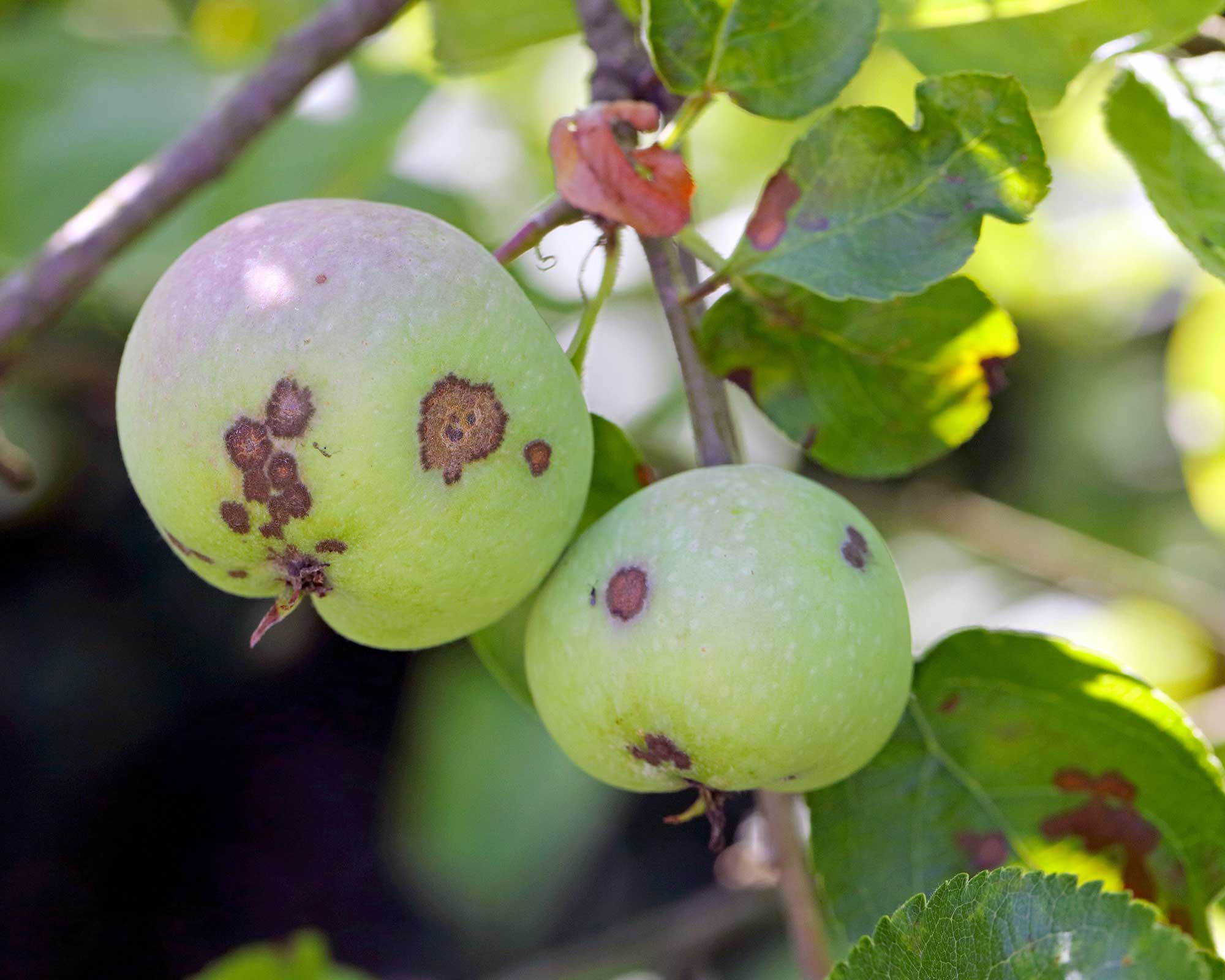
Scab disease is another fungal problem that can cover your apples in a scale-like coating. Severe attacks result in deep fissures in the skin and blemished leaves. It can also affect pear trees.
Thin crowded branches and feed your tree with sulfate of potash, says John. Sprinkle it over the root area, monthly, from mid-spring to early fall, and repeat annually. 'It toughens tissues and improves the fruits' resistance to adverse conditions.'
The RHS also suggests opting for apple varieties that are resistant to the disease, listing 'Discovery', 'Melba', and 'Topaz', to name a few.
Why is my apple tree covered in a white, waxy, fluffy material?
Woolly aphids are a relatively common pest that cover apple trees in a cotton-wool-like material. They feed on the sap of the tree, causing shoots to distort and develop knobbles.
Many gardeners need to know how to get rid of aphids from their plants at some point – and the good news is, there are ways to tackle the woolly apple tree variety, too.
Treat the problem by spraying a pesticide that's suitable for use on edible plants. In winter, you can also use Vitax Winter Tree Wash, available on Amazon, suggests John Negus, which will kill overwintering eggs.
'If stems are badly affected, cut them back to healthy tissue in late autumn to encourage robust regrowth,' he adds.
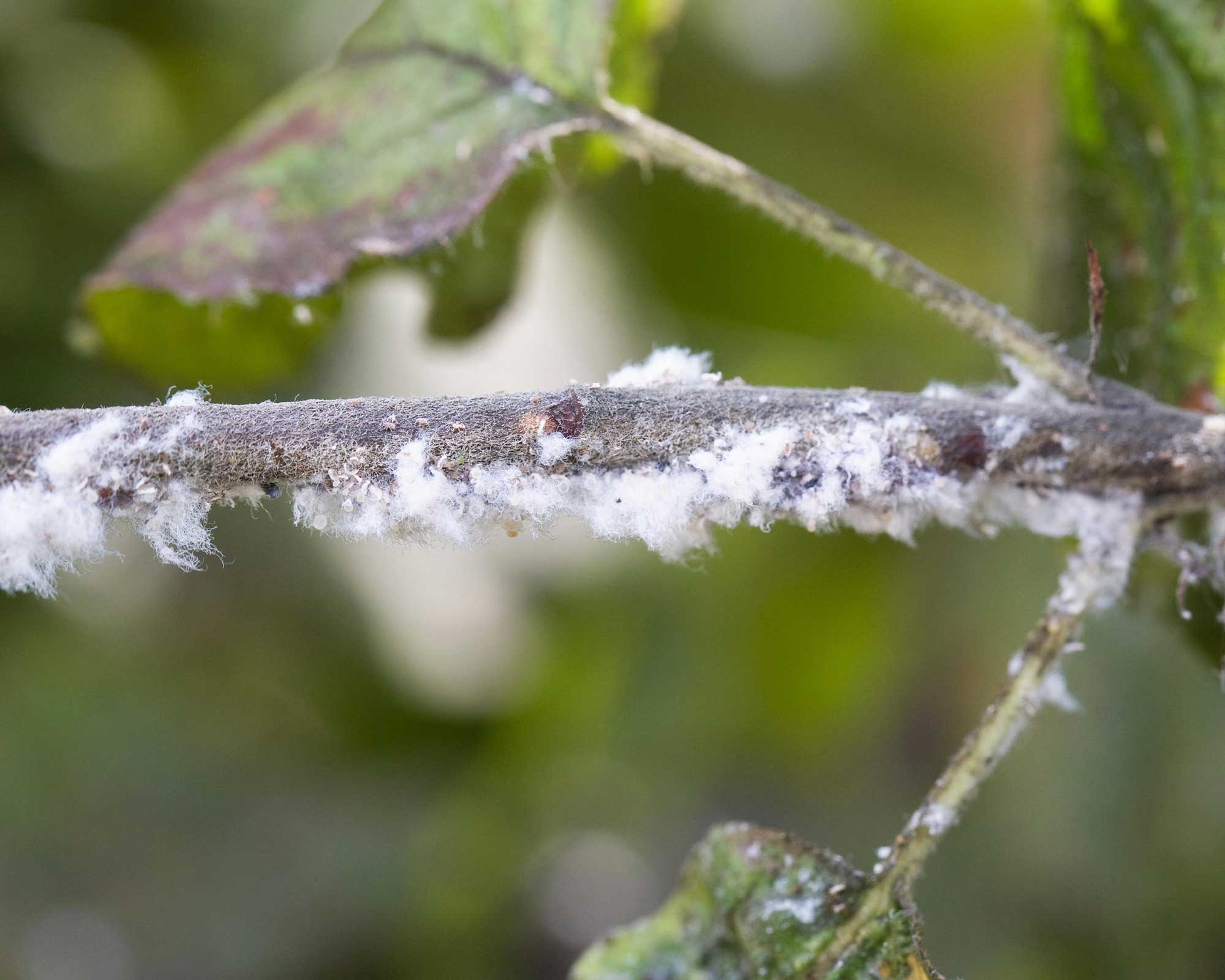
What can cause an apple tree's bark to split?
If the bark on the trunk of your apple tree has developed large splits, it could be due to canker. However, there are other, more innocuous causes, such as irregular uptake of moisture.
'If the splits appear to be "wholesome", with no browning or rotting, then the tree is relatively healthy and can be saved,' says John Negus. 'All you do is smear petroleum jelly over the gaps and use longish broad-headed tacks to pin the bark in place.'

The garden was always a big part of Holly's life growing up, as was the surrounding New Forest where she lived. Her appreciation for the great outdoors has only grown since then. She's been an allotment keeper, a professional gardener, and a botanical illustrator – plants are her passion.
